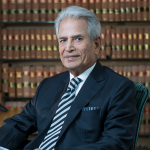Inventiveness in Patenting – Procedure to Assess, its Importance and Possible Reforms
INTRODUCTION:
Intellectual property rights are rapidly evolving field of law due to the huge rise in creative expression of ideas around the world at present. Buoyed by the said rise, a need has arisen for such properties to be protected to ensure that they are not misused or misappropriated. In this way, there are various forms of protection from misuse, and one such form is patenting which is also among the most crucial. Patenting is basically focused on inventions and helps in providing a plethora of benefits to the person who obtains it. Thanks to the aforesaid benefits, it is only right that care and caution is taken to determine whether or not an invention deserves to be patented. Usually, there are certain conditions that have to be met before obtaining a patent and before delving into these, it is essential to understand what exactly a patent is.
A patent is a right that grants an inventor an exclusive right to make use of it or sell it for a particular period of time. The right is granted only by the government in accordance with the laws of the said country. The idea behind granting patents is to prevent one’s intellectual property from being misused by guarding their works. In India, patents are governed by the Patents Act, 1970 which puts forth various provisions relating to requirements, procedures, penalties, jurisdiction etc. All of these put together form the patent regime in India which is quite solid and not very controversial while compared to various other contentious laws in the country [1]Arun K. Narasani et al, Indian Patent Law and Practice, 27-30 (2012 edition), Oxford India Paperbacks, Delhi. However, there is a perpetual need to examine even seemingly perfect laws to see if there is a need for reform or betterment. This article will focus on one such aspect which is inventiveness – one of the conditions that need to be satisfied before obtaining a patent.
REQUIREMENTS TO OBTAIN A PATENT:
There are broadly three conditions that need to be met in order to be able to obtain a patent [2]Patents Act, 1970, S. 2, 3 & 6. The first and chief among these is novelty which seeks to ensure that the invention is something that is new and not one that was previously known to the general public. This novelty requirement gets attacked when there has been prior use or prior publication of the invention in contention before the data of filing the application [3]Julian Cockbain & Sigrid Sterckx, Exclusions from Patentability: How Far Has the European Patent Office Eroded Boundaries?, 48-52 (2012 edition), Cambridge University Press, Kolkata. If there has been such prior use or publication, a patent will not be granted. It doesn’t matter whether the person obtaining the patent knew about the same or not. The reasoning behind this is that some information that is already available should not be patented again. Apart from novelty, another requirement is that the invention must be capable of being made use of and produced in an industrial setting. This condition is backed by the aim of patenting which is to encourage inventions. If an invention is trivial in such a way that no utility can be gotten out of it, such ones are to be neglected.
INVENTIVENESS AS A REQUIREMENT OF PATENTING:
The final requirement which will be the focus of this article is inventiveness or inventive step. While novelty is often considered to be the most important aspect in patenting, inventiveness is arguably of equal significance as well. Inventiveness puts forth that an invention must have a considerable technical advancement and that it must not be something that is obvious or trivial. The Patents Act defines inventive step as “a feature of an invention that involves a technical advancement as compared to the existing knowledge or having economic significance or both, and that makes the invention not obvious to a person skilled in the art“[4]Patents Act, 1970, s 2(1)(ja). So the inventiveness condition is in itself two-fold which is firstly that there must be an advancement to knowledge that already exists (whether or not there is economic significance) and this advancement in turn must not be obvious to a person who is ‘skilled in the art’.
Before proceeding to the importance of the necessity, it is key that the position of it in Indian as well as other jurisdictions along with chief case laws be examined. As mentioned previously, inventiveness is not a controversial or contentious area of law in India or around the world as such, but there have been several developments in its regime that they are essential to examine to see if there is room for reform [5]Susan Sell & Christopher May, Moments in Law: Contestation and Settlement in the History of Intellectual Property, Review of Political Economy, 488 Vol. 8, No. 3, 2001. Now, there have been various developments in the position of law concerning inventiveness through case laws, guidelines and the like. Also, thanks to the increased relevance of AI and the pharmaceutical industry where inventiveness is a delicate issue because of there being rapid developments, it is obvious that inventiveness will continue to be looked at and developed with the passage of time [6]AT Kearney, Technology and Innovation for the Future of Production: Accelerating Value Creation, World Economic Forum Papers, 3 Vol. 1, 2017.
PROCEDURE TO ASSESS INVENTIVENESS:
The widely accepted definitions for inventive step including the Indian Patents Act’s one is rather self-explanatory in their descriptions of how inventiveness is to be gauged. Broadly, it must be checked if there is a significant technical advancement which has been made by the invention before deciding if a person who is skilled in the concerned art would find it ‘obvious’. However, it isn’t as simple as it looks given that there are some areas that need interpretation especially the ‘person skilled in the art’ part. Also, the procedure is not given in an ordered way as such by the definition, opening up room for further interpretation[7]Arun K. Narasani et al, Indian Patent Law and Practice, 79 (2012 edition), Oxford India Paperbacks, Delhi. This is where a plethora of case laws have come of huge importance both in India and around the world. The courts in these cases have interpreted the inventiveness requirement to clarify the aforementioned areas that have scope and a need for interpretation.
UK PATENT LAW
The patent regime in the UK is extremely similar to that of India and hence, analysing their landmark cases on inventive step would not be a bad place to start at all. Two popular cases govern inventiveness in the country with the later one adding on to the first. The first one is the Windsurfing case wherein the key issue was whether a sailboard-related invention was obvious and whether it could be patented [8]Windsurfing International Inc. v Tabur Marine (Great Britain) Ltd, [1985] RPC 59. The Court of Appeal came up with a crucial principle stating that hindsight should not dictate things while checking for non-obviousness, but rather, hypothesis by putting oneself in the shoes of a reasonably skilled person should be the way to go. A four-step approach was then given as a procedure to determine obviousness. Firstly, the process involves identifying the concept that is inventive followed by putting oneself in the shoes of a ‘normally skilled but unimaginative addressee in the art’. Then, the inconsistencies between the invention and things that are known by the addressee should be checked before deciding whether the degree is enough to warrant the inventiveness requirement to be satisfied, and hence patent to be granted.
This four-step approach helps by providing ‘disciple, reasoning and method’ in order to check for obviousness [9]DSM NV’s Patent [2001] RPC 35. Despite the seemingly indisputable nature of this approach, it was indeed changed to an extent by the Pozzoli case [10]Pozzoli SPA v BDMO SA [2007] EWCA Civ 588. This case was yet another interesting one where one company ended up losing their already-held patent due to obviousness in the process of challenging another company’s infringement of the same patent. The invention in contention was a method of packaging multiple CD discs. Here, while analysing for inventiveness, the Court of Appeal laid down a different four-step approach with regard to the procedure. It is noteworthy that this approach is not something that overrides or is opposite to the Windsurfing approach. It merely changes the order and restates it. So here, the first step is to identify a hypothetical person who is skilled in the art and to identify what ‘common general knowledge’ he might have. Then, the inventive concept is identified before checking for inconsistencies if any between prior art and the concept. Finally, it is identified as to whether the inconsistencies are obvious enough to the said skilled person with common general knowledge in the art. If these conditions are satisfied, inventiveness is said to exist.
INDIAN PATENT LAW
The position of inventiveness in Indian patent law is similar to the UK patent law. As the Patents Act itself puts it, technical advancement and non-obviousness to a person skilled in the art constitute the inventive step. There haven’t been a lot of controversies or discussions regarding inventiveness in the country as such, with them being limited to the other requirement of novelty. However, there have indeed been case laws where the procedure to check for inventiveness as well as discussions on who a ‘person skilled in the art’ is have been held. These have all resulted in the current regime where inventiveness must be considered from the point of view of a person ‘sufficiently skilled in the art’ [11]Sandeep Jaidka vs. Mukesh Mittal, 2014 (59) PTC 234. Also, unlike foreign jurisdictions where the focus has been on just non-obviousness, Indian law imposes value on the need for a significant technical improvement that is more than just a ‘workshop improvement’ [12]Standipack Pvt. Ltd. and Ors. v. Oswal Trading Co. Ltd. and etc. AIR 2000 Delhi 23.
One of the earliest cases after the Patents Act came into force, which is relevant even today is Biswanath Prasad Radhey Shyam vs Hindustan Metal Industries [13]Biswanath Prasad Radhey Shyam v. Hindustan Metal Industries, AIR 1982 SC 1444. The invention in contention was a method of manufacturing utensils and the question was whether it was inventive enough to get a patent. The Supreme Court then laid down the tests for inventiveness in consonance with the Patents Act. Firstly, it was held that if a competent craftsman who has common general knowledge is able to ‘reach the invention’, inventiveness is said to be absent. Secondly, with regard to technical advancements, it was held that the invention must produce a ‘better article than before’. Just adding things to not give rise to a new and significant improvement would not be considered to satisfy the step of inventiveness. So minor changes or just combining two already existing things would not cut it, but rather there must be a proper advancement that leads to a fresh utility.
While these requirements are all quite clear, there is still a lot that would depend on a case to case basis, especially the determination of who a ‘person skilled in the art is’. In F. Hoffmann-La Roche Ltd. And Anr. vs Cipla Limited, the Delhi High Court held that a person skilled in the art refers not only to a person who has normal skills and knowledge in the relevant art but also those who are ‘sufficiently skilled and knowledgeable’ in it [14]F. Hoffmann-La Roche Ltd. And Anr. vs Cipla Limited, 148 (2008) DLT 598. The same has also been held in various other judgments by the Intellectual Property Appellate Board (IPAB). Thus, through the judgment in these cases, the condition became even stricter and rightly so. Therefore, hypothetically even if a skilled person in the concerned art finds one’s invention to be an obvious one, the inventiveness requirement will be deemed to be not met, leading to a patent to not be granted.
IMPORTANCE OF THE INVENTIVENESS REQUIREMENT:
Having looked at the inventiveness requirement and the procedure to gauge the same, it is necessary to understand as to why such a necessity and procedure is important in obtaining a patent. Now, we know that the aim of patenting is to encourage inventions and to ensure that one gets to exclusively use what they have invented [15]BH Hall, Patents and patent policy, Oxford Review of Economic Policy, 568 Vol. 23, No. 4, 2007. It balances the interests of the person who invents by providing exclusive rights as well as the interests of the general public [16]Mario Biagioli, Weighing intellectual property: Can we balance the social costs and benefits of patenting?, History of Science, 140 Vol. 57, No. 1, 2019. Having said that, patents can’t be provided for each and every small advancement, innovation or invention. This would lead to an imbalance by providing exclusive rights to inventors when they don’t really deserve it. It must be understood as to when a patent is deserved. This is where inventiveness comes in, unlike novelty which is focused solely on and limited to whether or not something similar to the invention already exists.
The importance of inventiveness can be better gauged by looking at how the absence of the requirement would affect the other requirements and hence, the whole process of patenting. Novelty does make sure that inventions are new and aren’t present in prior art. But in the absence of inventiveness, even a trivial but novel advancement could be considered to be an invention. Thus, inventiveness is what determines whether the person has actually worked, researched and invented or come up with a significant advancement. So when there is only novelty and no inventiveness as a requirement, a mere ‘repackaging’ would be patentable as it would satisfy the novelty test [17]Bajaj Auto Ltd. v. TVS Motor Company Ltd. 2008(36) PTC 417 (Mad).
With regard to the procedure to check for the requirement in itself, the fact that ‘person skilled in the art’ refers to ‘sufficient skill’ and not just ‘ordinary skill’ is important as well. This widens the scope of what is covered and makes the requirement stricter [18]Sukanya Sarkar, Opinion: It’s about time for patent reform in India, (last visited Oct 29, 2021). If a person with ‘ordinary skill’ was interpreted to be the meaning, there are some inventions that would be deemed to satisfy the condition even if they would have been obvious to someone more skilled than the ‘ordinarily skilled’ person. Therefore, widening the scope of ‘person skilled in the art’ makes sure that even if an invention is obvious to a person who is already skilled in the concerned art, patentability would be lost. Yet another interpretation that widened this scope was the judgment in Enercon (India) Limited v. Aloys Wobben Argestrasse where the IPAB held that the ‘person skilled in the art’ need not necessarily be considered to be an Indian, even if hypothetical [19]Enercon (India) Limited v. Aloys Wobben Argestrasse, C.S. (O.S.) 1967 of 2009. In this way, inventiveness as a requirement ensures that only deserving inventions are patentable.
IS THERE A NEED FOR REFORMS?
Having looked at the position of inventiveness in India and its importance, it is only right that the question of whether there is a need for reforms in this regard be answered. The Patents Act and decided case laws have led to a solidly established position for the requirement and hence, there don’t seem to be problems as such. However, there is a possibility for problems to arise especially when things are mostly handled on a case to case basis. In today’s modern world, where AI, technology and the digital age are taking over, there are bound to be various inventions that are non-obvious to various people but then they might actually be obvious to someone in the field [20]https://www.robic.ca/en/publications/patenting-ai-assisted-inventions-new-obviousness-standard-required). And there are established positions of law to ensure that as given by the Enercon case. However, it might get difficult to accurately ascertain these more often than not. This is exactly why clarity would be required for judges as well as patentees.
Now, clarity can’t be provided by including provisions in the Patent Act because that would make things difficult from the point of view of achieving objectivity and uniformity. Retrospective application of the requirements would then become an issue. Therefore, guidelines are the way to go as these can be provided to patentees, government officials and judges. If there are guidelines that are provided in each and every field of invention, the problem of objectivity and uniformity can be solved by providing different thresholds and rules to different fields. There would then be a decreased need for interpretation of statutes. Thus, the Patents Act can be left as such, while opting for other focused reforms. But guidelines, regulations and rules can go a long way in ensuring even more perfection in the patent regime of India.
CONCLUSION
Inventiveness, according to Ana Ramalho of the Institute of Intellectual Property in Japan, is the most difficult to assess in a patent application but also the most important[21]Ana Ramalho, Patentability of AI-Generated Inventions: Is a Reform of the Patent System Needed?,SSRN, 2 Vol. 37, 2018, available at https://ssrn.com/abstract=3168703 . Novelty is crucial, yes, and it has its own complexities such as when prior use and prior publication are unknown to the patentee. However, inventiveness with its combination of enough advancement and non-obviousness is what checks if a patent must be given. Mere repackaging or workshop additions can’t be patented and it is inventiveness which ensures so. Now, the laws on the subject in India and around the world are sufficient enough, but there can be even more help that can be provided to patent offices and courts. This is because a lot of determining inventiveness boils down to how the court or the patent office interprets the hypothetical ‘skilled person in the art’. For this purpose, providing guidelines in each particular area of innovation can be of great help. As far as possible, wherever there is clarity, the process of patenting as well as adjudicating cases relating to it can be achieved with ease and that is exactly what must be worked toward.
It’s well-established that patents are indispensable when one comes up with a new invention. Patenting is a very necessary process and a key form of intellectual property rights protection. Due to the variety of benefits that come with it, it’s essential to ensure only the right inventions are able to receive patents. Only deserving ones must. That is why inventiveness is of paramount importance and that is exactly why India has come up with a solid regime in that regard. In fact, the World Intellectual Property Organization in one of its reports titled “An Agenda for Patent Reform and Harmonization for Developing Countries” cited India as a positive example with regard to inventiveness, stating that India’s high standards of inventive step deserve appreciation and that other countries must follow suit [22]https://www.wipo.int/export/sites/www/meetings/en/2006/scp_of_ge_06/presentations/scp_of_ge_06_correa.pdf. Having reiterated this, there is still room for improvement. There always is and there always be. And that is exactly what India must strive for.

Nevin A
4th Year, B.A., LL.B (Hons), Tamil Nadu National Law University, Trichy
References
| ↑1 | Arun K. Narasani et al, Indian Patent Law and Practice, 27-30 (2012 edition), Oxford India Paperbacks, Delhi |
|---|---|
| ↑2 | Patents Act, 1970, S. 2, 3 & 6 |
| ↑3 | Julian Cockbain & Sigrid Sterckx, Exclusions from Patentability: How Far Has the European Patent Office Eroded Boundaries?, 48-52 (2012 edition), Cambridge University Press, Kolkata |
| ↑4 | Patents Act, 1970, s 2(1)(ja |
| ↑5 | Susan Sell & Christopher May, Moments in Law: Contestation and Settlement in the History of Intellectual Property, Review of Political Economy, 488 Vol. 8, No. 3, 2001 |
| ↑6 | AT Kearney, Technology and Innovation for the Future of Production: Accelerating Value Creation, World Economic Forum Papers, 3 Vol. 1, 2017 |
| ↑7 | Arun K. Narasani et al, Indian Patent Law and Practice, 79 (2012 edition), Oxford India Paperbacks, Delhi |
| ↑8 | Windsurfing International Inc. v Tabur Marine (Great Britain) Ltd, [1985] RPC 59 |
| ↑9 | DSM NV’s Patent [2001] RPC 35 |
| ↑10 | Pozzoli SPA v BDMO SA [2007] EWCA Civ 588 |
| ↑11 | Sandeep Jaidka vs. Mukesh Mittal, 2014 (59) PTC 234 |
| ↑12 | Standipack Pvt. Ltd. and Ors. v. Oswal Trading Co. Ltd. and etc. AIR 2000 Delhi 23 |
| ↑13 | Biswanath Prasad Radhey Shyam v. Hindustan Metal Industries, AIR 1982 SC 1444 |
| ↑14 | F. Hoffmann-La Roche Ltd. And Anr. vs Cipla Limited, 148 (2008) DLT 598 |
| ↑15 | BH Hall, Patents and patent policy, Oxford Review of Economic Policy, 568 Vol. 23, No. 4, 2007 |
| ↑16 | Mario Biagioli, Weighing intellectual property: Can we balance the social costs and benefits of patenting?, History of Science, 140 Vol. 57, No. 1, 2019 |
| ↑17 | Bajaj Auto Ltd. v. TVS Motor Company Ltd. 2008(36) PTC 417 (Mad |
| ↑18 | Sukanya Sarkar, Opinion: It’s about time for patent reform in India, (last visited Oct 29, 2021 |
| ↑19 | Enercon (India) Limited v. Aloys Wobben Argestrasse, C.S. (O.S.) 1967 of 2009 |
| ↑20 | https://www.robic.ca/en/publications/patenting-ai-assisted-inventions-new-obviousness-standard-required |
| ↑21 | Ana Ramalho, Patentability of AI-Generated Inventions: Is a Reform of the Patent System Needed?,SSRN, 2 Vol. 37, 2018, available at https://ssrn.com/abstract=3168703 |
| ↑22 | https://www.wipo.int/export/sites/www/meetings/en/2006/scp_of_ge_06/presentations/scp_of_ge_06_correa.pdf |









 He holds a Bachelor’s and Master’s Degree in Corporate Secretaryship and a Degree in Law. He is a Fellow member of the Institute of Company Secretaries of India and an Associate Member of the Corporate Governance Institute, UK and Ireland. He has also completed a program from ISB on ‘Value Creation through Mergers and Acquisitions.
He holds a Bachelor’s and Master’s Degree in Corporate Secretaryship and a Degree in Law. He is a Fellow member of the Institute of Company Secretaries of India and an Associate Member of the Corporate Governance Institute, UK and Ireland. He has also completed a program from ISB on ‘Value Creation through Mergers and Acquisitions. Mr P Muthusamy is an Indian Revenue Service (IRS) officer with an outstanding career of 30+ years of experience and expertise in all niche areas of Indirect Taxes covering a wide spectrum including GST, Customs, GATT Valuation, Central Excise and Foreign Trade.
Mr P Muthusamy is an Indian Revenue Service (IRS) officer with an outstanding career of 30+ years of experience and expertise in all niche areas of Indirect Taxes covering a wide spectrum including GST, Customs, GATT Valuation, Central Excise and Foreign Trade. During his judicial role, he heard and decided a large number of cases, including some of the most sensitive, complicated, and high-stake matters on insolvency and bankruptcy, including many cases on resolution plans, shareholder disputes and Schemes of Amalgamation, De-mergers, restructuring etc.,
During his judicial role, he heard and decided a large number of cases, including some of the most sensitive, complicated, and high-stake matters on insolvency and bankruptcy, including many cases on resolution plans, shareholder disputes and Schemes of Amalgamation, De-mergers, restructuring etc., Ms. Sarah Abraham has been enrolled with the Bar Council of Tamil Nadu since 1998. Her areas of practice include Shareholder Disputes, Corporate Compliances, Mergers and Acquisitions, Private Equity/ Venture Capital Agreements and allied disputes, Information Technology Contracts, Intellectual Property, General Commercial Agreements, Litigation, Arbitration and Mediation.
Ms. Sarah Abraham has been enrolled with the Bar Council of Tamil Nadu since 1998. Her areas of practice include Shareholder Disputes, Corporate Compliances, Mergers and Acquisitions, Private Equity/ Venture Capital Agreements and allied disputes, Information Technology Contracts, Intellectual Property, General Commercial Agreements, Litigation, Arbitration and Mediation. A K Mylsamy is the Founder, Managing Partner and the anchor of the firm. He holds a Degree in law and a Degree in Literature. He is enrolled with the Bar Council of Tamil Nadu.
A K Mylsamy is the Founder, Managing Partner and the anchor of the firm. He holds a Degree in law and a Degree in Literature. He is enrolled with the Bar Council of Tamil Nadu. M Subathra holds a Degree in law and a Master’s Degree in International Business Law from the University of Manchester, United Kingdom. She is enrolled with the Bar Council of Tamil Nadu.
M Subathra holds a Degree in law and a Master’s Degree in International Business Law from the University of Manchester, United Kingdom. She is enrolled with the Bar Council of Tamil Nadu. Mr. K Rajendran is a former Indian Revenue Service (IRS) officer with a distinguished service of 35 years in the Indirect Taxation Department with rich experience and expertise in the fields of Customs, Central Excise, Service Tax and GST. He possesses Master’s Degree in English literature. Prior to joining the Department, he served for the All India Radio, Coimbatore for a period of about 4 years.
Mr. K Rajendran is a former Indian Revenue Service (IRS) officer with a distinguished service of 35 years in the Indirect Taxation Department with rich experience and expertise in the fields of Customs, Central Excise, Service Tax and GST. He possesses Master’s Degree in English literature. Prior to joining the Department, he served for the All India Radio, Coimbatore for a period of about 4 years. An MBA from the Indian Institute of Management, Calcutta, and an M.Sc. in Tourism Management from the Scottish Hotel School, UK, Ashok Anantram was one fo the earliest IIM graduates to enter the Indian hospitality industry. He joined India Tourism Development Corporation (ITDC) in 1970 and after a brief stint proceeded to the UK on a scholarship. On his return to India, he joined ITC Hotels Limited in 1975. Over the 30 years in this Organisation, he held senior leadership positions in Sales & Marketing and was its Vice President – Sales & Marketing. He was closely involved in decision making at the corporate level and saw the chain grow from a single hotel in 1975 to a very large multi-brand professional hospitality group.
An MBA from the Indian Institute of Management, Calcutta, and an M.Sc. in Tourism Management from the Scottish Hotel School, UK, Ashok Anantram was one fo the earliest IIM graduates to enter the Indian hospitality industry. He joined India Tourism Development Corporation (ITDC) in 1970 and after a brief stint proceeded to the UK on a scholarship. On his return to India, he joined ITC Hotels Limited in 1975. Over the 30 years in this Organisation, he held senior leadership positions in Sales & Marketing and was its Vice President – Sales & Marketing. He was closely involved in decision making at the corporate level and saw the chain grow from a single hotel in 1975 to a very large multi-brand professional hospitality group. Mani holds a Bachelor Degree in Science and P.G. Diploma in Journalism and Public Relations. He has a rich and varied experience of over 4 decades in Banking, Finance, Hospitality and freelance Journalism. He began his career with Andhra Bank and had the benefit of several training programs in Banking.
Mani holds a Bachelor Degree in Science and P.G. Diploma in Journalism and Public Relations. He has a rich and varied experience of over 4 decades in Banking, Finance, Hospitality and freelance Journalism. He began his career with Andhra Bank and had the benefit of several training programs in Banking. Mr. Kailash Chandra Kala joined the Department of Revenue, Ministry of Finance as ‘Customs Appraiser’ at Mumbai in the year 1993.
Mr. Kailash Chandra Kala joined the Department of Revenue, Ministry of Finance as ‘Customs Appraiser’ at Mumbai in the year 1993.
 S Ramanujam, is a Chartered Accountant with over 40 years of experience and specialization in areas of Corporate Tax, Mergers or Demergers, Restructuring and Acquisitions. He worked as the Executive Vice-President, Group Taxation of the UB Group, Bangalore.
S Ramanujam, is a Chartered Accountant with over 40 years of experience and specialization in areas of Corporate Tax, Mergers or Demergers, Restructuring and Acquisitions. He worked as the Executive Vice-President, Group Taxation of the UB Group, Bangalore. K K Balu holds a degree in B.A and B.L and is a Corporate Lawyer having over 50 years of Legal, Teaching and Judicial experience.
K K Balu holds a degree in B.A and B.L and is a Corporate Lawyer having over 50 years of Legal, Teaching and Judicial experience. Justice M. Jaichandren hails from an illustrious family of lawyers, academics and politicians. Justice Jaichandren majored in criminology and then qualified as a lawyer by securing a gold medal. He successfully practiced in the Madras High Court and appeared in several civil, criminal, consumer, labour, administrative and debt recovery tribunals. He held office as an Advocate for the Government (Writs Side) in Chennai and was on the panel of several government organizations as senior counsel. His true passion lay in practicing Constitutional laws with focus on writs in the Madras High Court. He was appointed Judge, High Court of Madras in December 2005 and retired in February 2017.
Justice M. Jaichandren hails from an illustrious family of lawyers, academics and politicians. Justice Jaichandren majored in criminology and then qualified as a lawyer by securing a gold medal. He successfully practiced in the Madras High Court and appeared in several civil, criminal, consumer, labour, administrative and debt recovery tribunals. He held office as an Advocate for the Government (Writs Side) in Chennai and was on the panel of several government organizations as senior counsel. His true passion lay in practicing Constitutional laws with focus on writs in the Madras High Court. He was appointed Judge, High Court of Madras in December 2005 and retired in February 2017. S Balasubramanian is a Commerce and Law Graduate. He is a member of the Delhi Bar Council, an associate Member of the Institute of Chartered Accountants of India, the Institute of Company Secretaries of India and Management Accountants of India.
S Balasubramanian is a Commerce and Law Graduate. He is a member of the Delhi Bar Council, an associate Member of the Institute of Chartered Accountants of India, the Institute of Company Secretaries of India and Management Accountants of India.